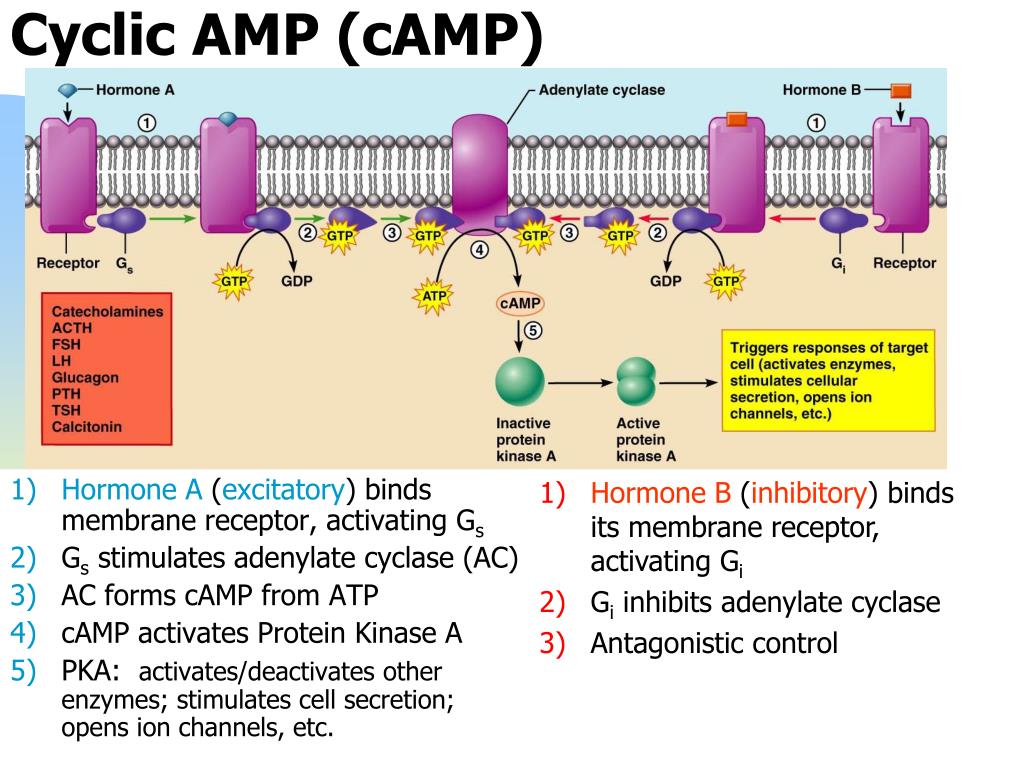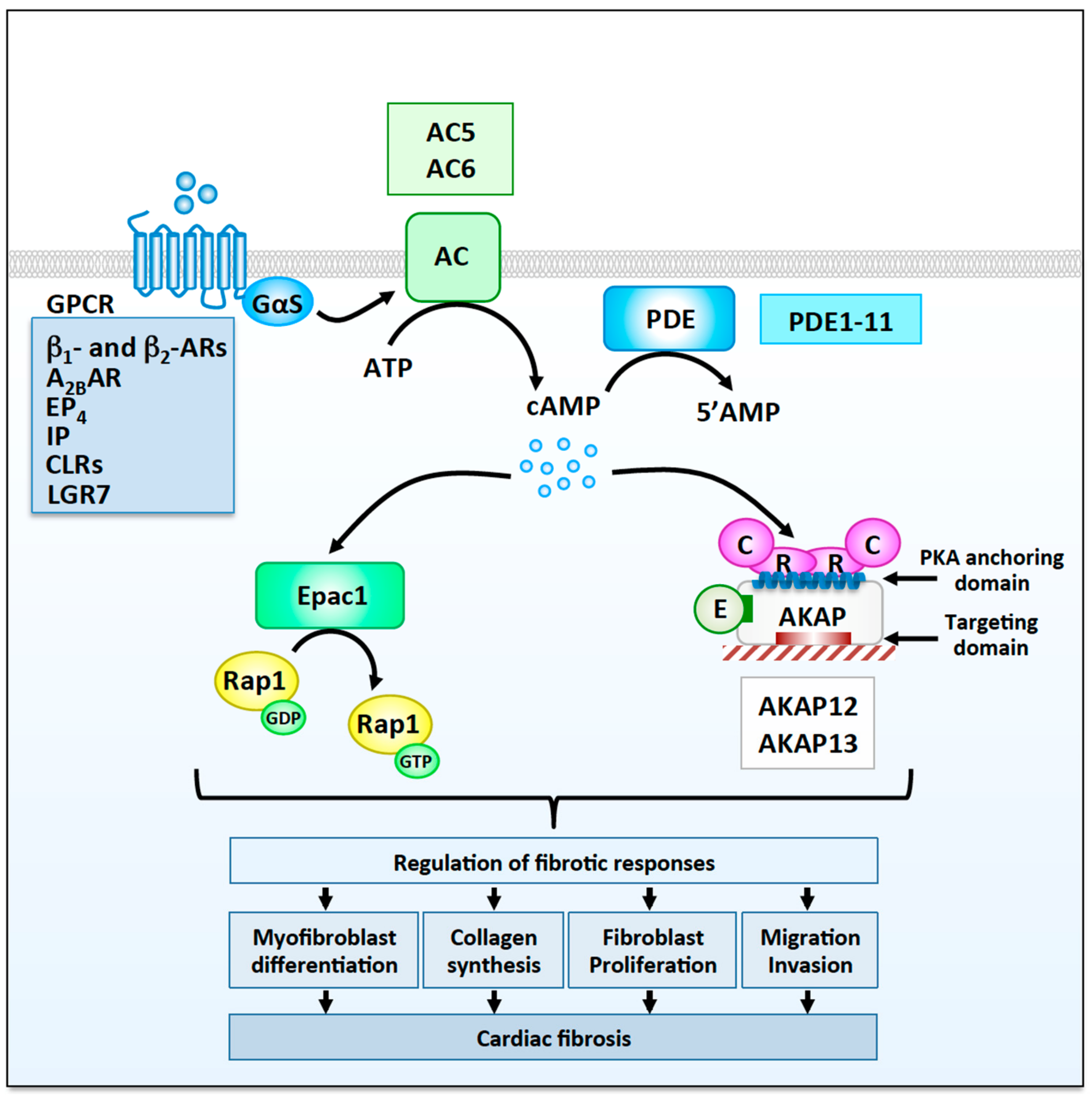

This enzymatic hydrolysis is carried out by cAMP phosphodiesterase (PDE) that cleaves the 3’,5’-phosphodiester bond in the cAMP, thus inhibiting the phosphorylating activity of PKA. Once the signaling has occurred, cAMP is hydrolyzed to 5’-AMP. For example, cAMP response element-binding protein (CREB) is phosphorylated leading to the regulation of gene transcription in a cell. An activated PKA has the ability to phosphorylate serine and threonine residues on substrate proteins which then initiate a variety of responses within the cell. The main purpose of cAMP’s is to activate a cAMP-dependent family of enzymes called protein kinase A. The production of cAMP is regulated by Adenylyl Cyclase and phosphodiesterase. Certain bacteria such as Vibrio cholerae (Cholera) and Bordetella pertussis (whooping cough or pertussis) produce toxins that cause continual activation of adenylyl cyclase in the intestinal cells and tracheal epithelial cells, thereby resulting in diarrhea and whooping cough. The α-subunit has GTPase activity that and hydrolyzes GTP to GDP, that results in inactivation and dissociation of α-subunit from the adenylyl cyclase and reassociating with the βγ dimer. Once cAMP is generated, it then signals activation of PKA, EPAC, or other cAMP-activated proteins to stimulate physiological responses. Adenylyl cyclase then generated the second messenger, 3’, 5’-Adenosine monophosphate (cyclic AMP or cAMP), by ATP cyclization. The GTP-bound α-subunit then dissociates leaving behind a βγ dimer, activating the neighboring membrane-bound adenylyl cyclase. Activation by a ligand such as a hormone or a neurotransmitter causes a change in the conformation of GPCR and causes the GDP to be switched with GTP. The of the G-proteins bind to guanine triphosphate (GTP) in the active state and to guanosine diphosphate (GDP) in an inactive state. The intracellular domain interacts with specialized trimeric proteins, that contain α, β, γ subunits attached to the cell membrane. GPCRs are unique seven transmembrane receptors characterized by an extracellular ligand-binding domain, seven transmembrane alpha helices, and an intracellular domain. An extracellular chemical signal such as a hormone or neurotransmitter binds to their receptors known as the G protein-coupled receptors (GPCR). ĬAMP is generated by a complex, second messenger signal transduction system. Clinically, the ubiquitous nature of the cAMP pathway gives rise to therapeutic possibilities within the signal transduction system to fight against diseases such as cancer, diabetes, heart failure, inflammation, neurological disorders, myocardial atrophy, and mood disorders. Metabolism, gene regulation, regulation of neurotransmitter synthesis, growth factors, and immune function are some examples of the numerous biological processes that utilize cAMP.

cAMP can trigger a cascade of events to influence cellular function through its interaction with protein effectors such as protein kinase A (PKA), exchange proteins activated by cAMP (EPACs), cyclic nucleotide-gated ion (CNG) channels, and hyperpolarization-activated cyclic nucleotide-gated (HCN) channels. Cyclic adenosine monophosphate is a small, hydrophilic molecule commonly known as cyclic AMP or cAMP, which is an important intracellular second messenger molecule regulated in many physiological processes. Sutherland in 1958 for which he received a Nobel prize.


 0 kommentar(er)
0 kommentar(er)
